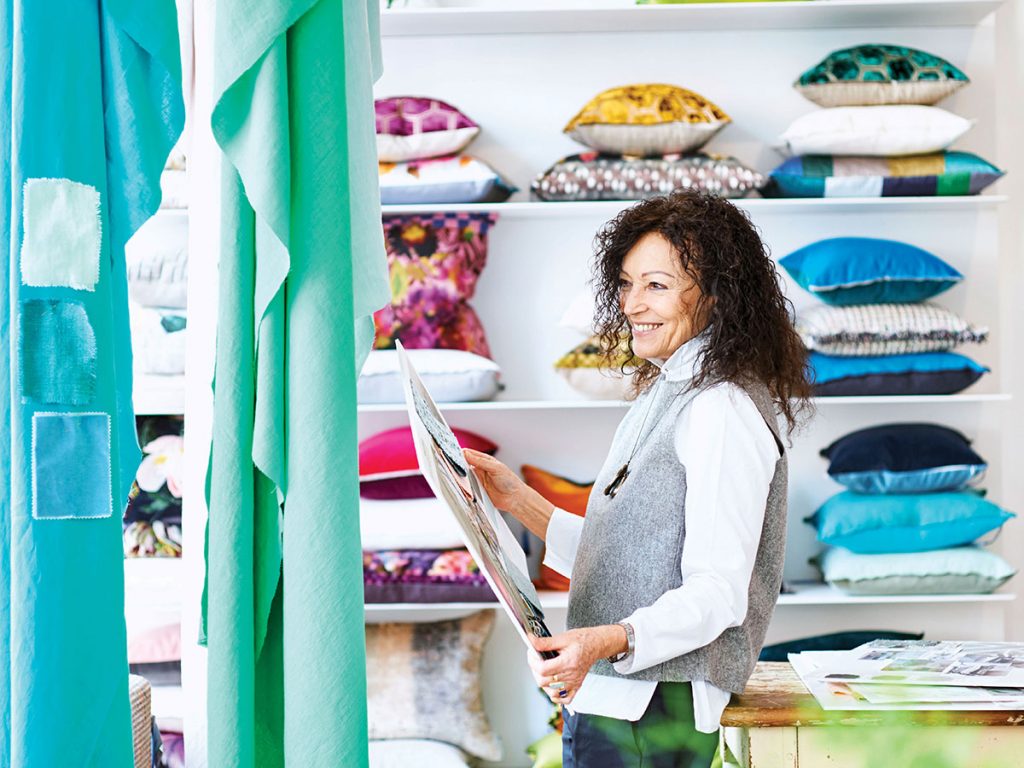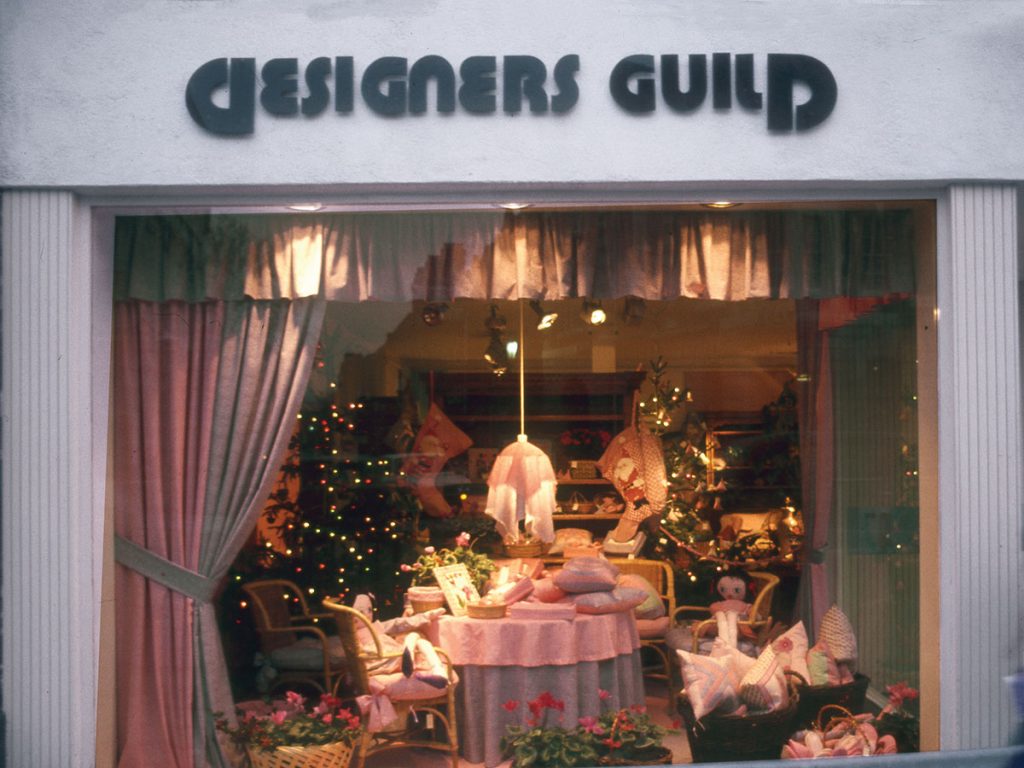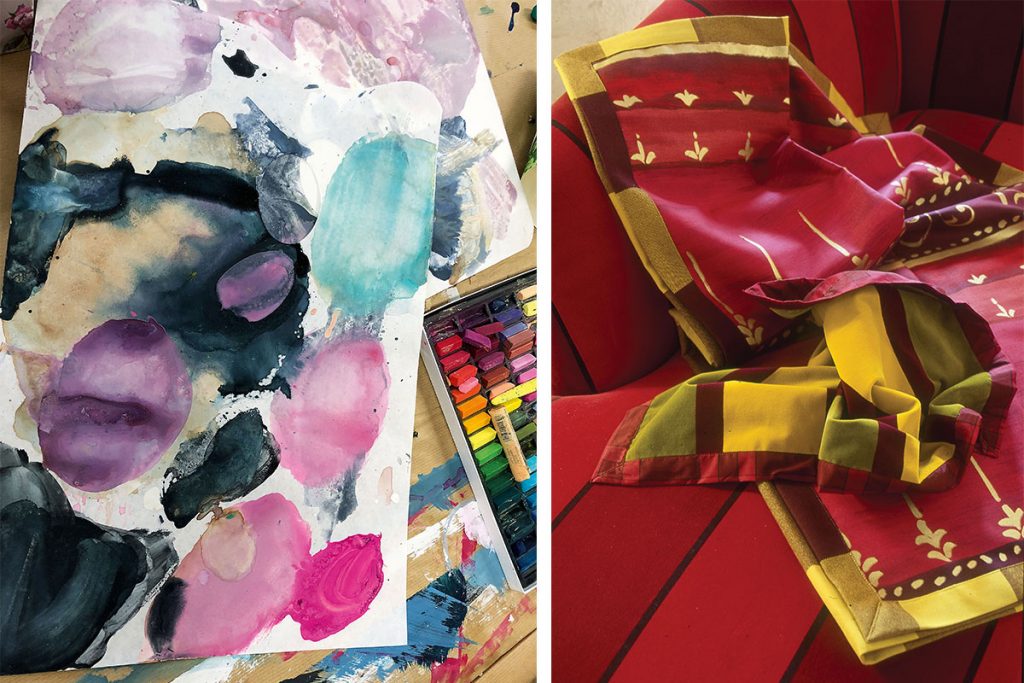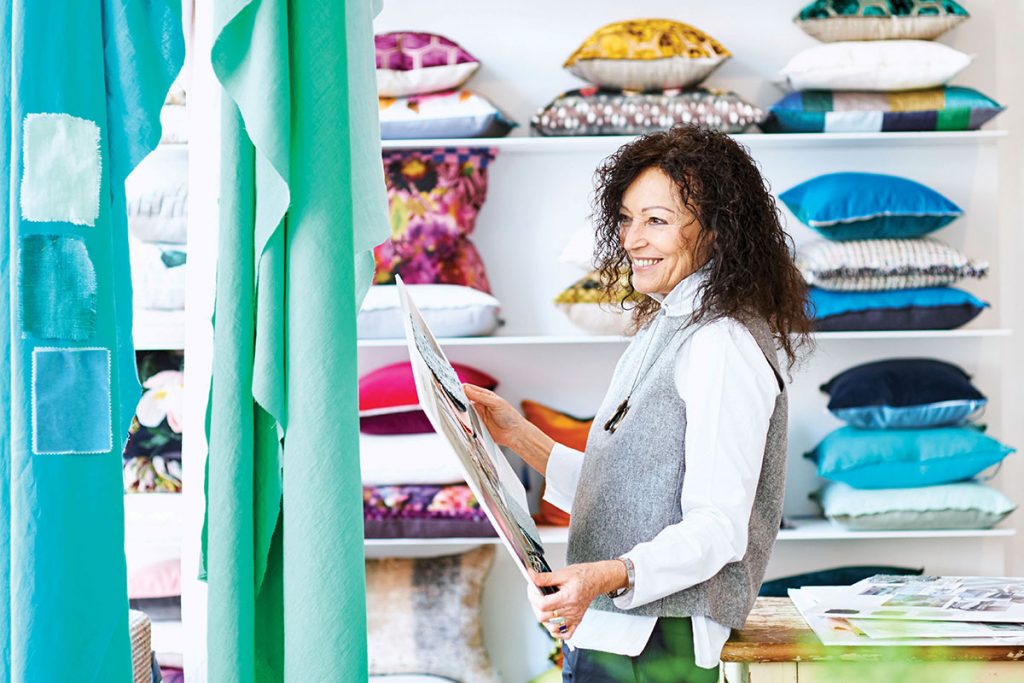Today, Designers Guild is an international home and lifestyle brand, but its history goes back fifty years to a store on the King’s Road in Chelsea

Words Miriam Methuen-Jones
As a young interior designer in the late 1960s, Tricia Guild recalls feeling frustrated by the lack of variety on offer: “The look of the time was deeply rooted in the traditional – classic chintzes and florals in easy neutrals and midtones – and I felt rather limited by the available fabrics,” she says.
Determined to break away from the norm, she took a trip to India and was immediately inspired by the landscape, architecture and, most importantly, the colours.
On her return to London, Guild set to work creating her own fabrics and wallpaper, inspired by Indian block prints but reinvented in a vivid colour palette. In those days, fabrics and wall-coverings were largely shown only in swatch books and tended to be treated entirely separately from other home accessories. Guild knew her new collection needed to be properly displayed to be appreciated, so she opened a shop, simply called Designers Guild, to do just that.

The store, on the King’s Road in Chelsea, allowed customers to experience all aspects of home design in one place; it was a revolutionary concept that quickly attracted people looking to improve their homes. “My aim for Designers Guild has always been for it to offer a total lifestyle – to combine our own products with other specifically curated pieces of contemporary and vintage furniture, ceramics and more.”
Now, fifty years on, the brand has spread across the world, with showrooms in more than 80 countries – and it is still lauded particularly for its use of colour. That’s something its founder is incredibly passionate about: “The alchemy of colour has always been a significant part of our design process. We offer a huge breadth of colours in our palette – from the more vibrant shades to masses of naturals and neutrals.”

Guild admits she’s not the nostalgic type, preferring to keep things current and always looking ahead. Given it’s half a century since the first store opened, though, a little reminiscence seems justified; as such, the brand has reinterpreted Grandiflora Rose, a voluptuous floral print collection that was popular in the 1980s: “Our depiction of flowers, plants and trees in gorgeous colours and textures has really evolved over the decades and is very much a hallmark of our style,” says Guild.
“The modern version of Grandiflora Rose is a true celebration of flowers, imagined in the most joyful colours and digitally printed onto pure cotton.”
Part of what keeps the company relevant is its founder’s appreciation of creative collaboration. Alongside her own patterns, Designers Guild distributes products by the likes of William Yeoward. “I thrive in partnership with other creatives, as each collaboration brings a new dimension to what we offer.”
And what of the next fifty years? Well, more collections are always in the works, along with collaborations, new products, new ideas, and, of course, plenty more colour.

ATTENTION TO DETAIL
THE BUSINESS Today, Designers Guild is an international home and lifestyle brand employing over 280 people, with offices in London, Munich, Paris, New York and Stockholm, plus showrooms in more than 80 countries around the globe.
ETHOS Tricia Guild’s philosophy of creativity, ingenuity and quality influences all that the brand does. Her brother, Simon Jeffreys, joined the business in 1986 and is group chief executive. Designers Guild, says its founder and creative director, exists to help people make their homes beautiful in a personal way.





